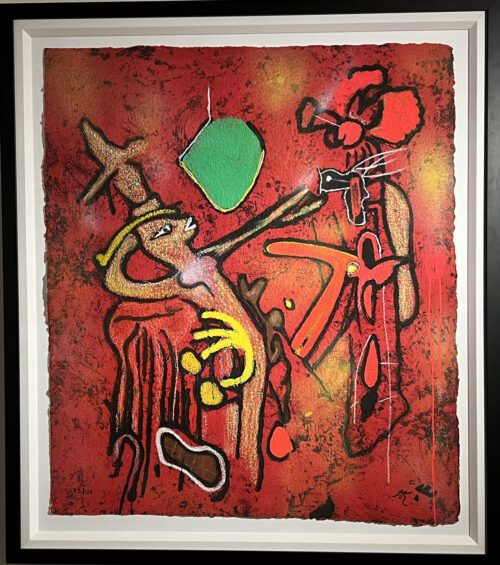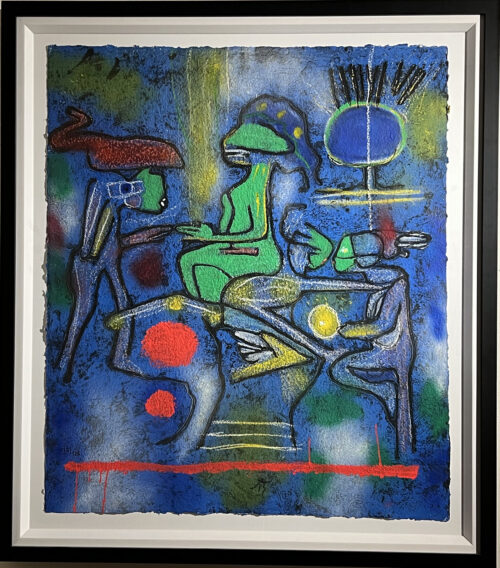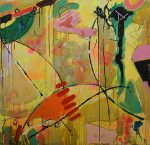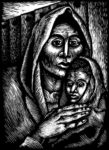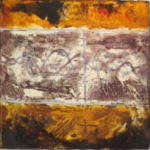
Born in Santiago, Chile to Basque parents in an upper middle class family, Matta graduated from architectural school in 1933, and settled in Paris in 1935, where he apprenticed with the famed Modernist architect, Le Corbusier. In Paris, Matta was introduced to Federico Garcia Lorca, Salvador Dali, and the young British artist, Gordon Onslow Ford, who became his best friend.
Andre Breton, seeing their work, invited the young Matta, along with Onslow Ford, to join the Surrealists. Matta explored his subconscious with a symbolic, abstract language and an ever-changing internal landscape, a process he termed “Psychological Morphology”.
Like many of his contemporaries, Matta emigrated to New York at the outbreak of WWII, and participated in the exhibitions and lecture series begun by the Surrealists at the New School of Social Research, led by Onslow Ford. Matta’s youth, charisma, and Dynamic energy made him an approachable figure in the eyes of the young Americans. He developed a mentor-like relationship with many of them and ultimately began a series of weekly workshops of painting, collaborative game playing, and Surrealist philosophy in 1941. Among these artist/students were William Baziotes, Gerome Kamrowski, Jackson Pollock, Arshile Gorky, Peter Busa, and Robert Motherwell.
In her groundbreaking tome, “SURREALISM IN EXILE, And The Beginning Of The New York School”, art historian Martica Sawin wrote, Matta “…wanted to create a splinter group for the Surrealists in exile to rival (Andre) Breton’s stranglehold on the movement.” She quotes Kamrowski as remembering how “Matta was trying to project certain ideas, to get people to visualize time, to develop some sort of symbol, and as you drew automatically, to see what would be a common connector.”
Much of what later became Abstract Expressionism was attributable to the theories and techniques that Matta had explored as a member of the Surrealists, and later passed on to the Americans; specifically the concept of automatism and the predominance of the subconscious or irrational mind over the rational. More than any of the Europeans, Matta was the single greatest influence over this generation of American artists, living in New York and open to revolutionary forms of artistic expression.
Upon Arshile Gorky’s suicide in 1948, Andre Breton excommunicated Matta from the Surrealists, holding him responsible for the artist’s death due to an affair between Matta and Gorky’s wife, Agnes. Matta spent his remaining years between Europe and South America, and died in Civitavecchia, Italy in 2002. Numerous exhibitions and retrospectives in Berlin, Paris, and New York have honored his brilliant career and contributions.


